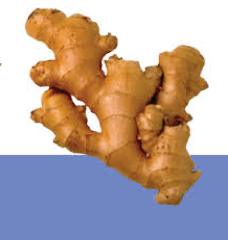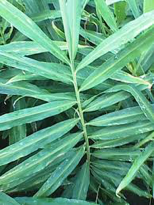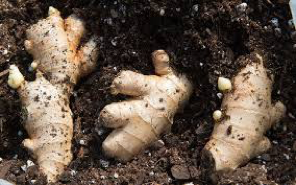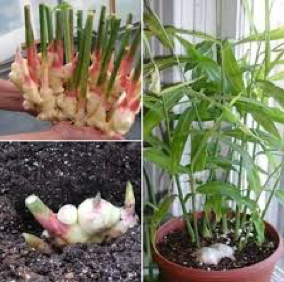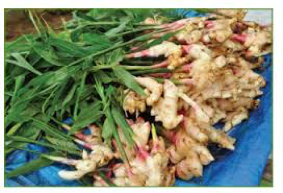Growing Ginger at Home
go.ncsu.edu/readext?661433
en Español / em Português
El inglés es el idioma de control de esta página. En la medida en que haya algún conflicto entre la traducción al inglés y la traducción, el inglés prevalece.
Al hacer clic en el enlace de traducción se activa un servicio de traducción gratuito para convertir la página al español. Al igual que con cualquier traducción por Internet, la conversión no es sensible al contexto y puede que no traduzca el texto en su significado original. NC State Extension no garantiza la exactitud del texto traducido. Por favor, tenga en cuenta que algunas aplicaciones y/o servicios pueden no funcionar como se espera cuando se traducen.
Português
Inglês é o idioma de controle desta página. Na medida que haja algum conflito entre o texto original em Inglês e a tradução, o Inglês prevalece.
Ao clicar no link de tradução, um serviço gratuito de tradução será ativado para converter a página para o Português. Como em qualquer tradução pela internet, a conversão não é sensivel ao contexto e pode não ocorrer a tradução para o significado orginal. O serviço de Extensão da Carolina do Norte (NC State Extension) não garante a exatidão do texto traduzido. Por favor, observe que algumas funções ou serviços podem não funcionar como esperado após a tradução.
English
English is the controlling language of this page. To the extent there is any conflict between the English text and the translation, English controls.
Clicking on the translation link activates a free translation service to convert the page to Spanish. As with any Internet translation, the conversion is not context-sensitive and may not translate the text to its original meaning. NC State Extension does not guarantee the accuracy of the translated text. Please note that some applications and/or services may not function as expected when translated.
Collapse ▲The ginger plant (Zingiber officinale) is grown for its spicy, flavorful taste. The active ingredient in ginger is called gingerols. Gingerols are found in the rhizomes, which are different than roots. Rhizomes are considered underground stems with the ability to produce roots and shoots at each node
Buy Ginger Rhizomes:
To grow ginger at home, purchase fresh ginger rhizomes from a plant nursery or seed company source. If you can’t find a source, you can use grocery store ginger. If possible, buy organic ginger as it may not be treated with sprout inhibitor. If buying regular ginger at the grocery store, soak overnight in water. Discard the water. Be sure to purchase large, fat ginger rhizomes to start your plants.
When to start:
Ginger is a tropical plant. It will not grow outside year-round in USDA Hardiness Zones 8 and below. If you live in USDA Hardiness Zone 9, 10, or 12 and temperatures do not fall to or below 32 degrees, you can safely grow ginger outside. The rest of us, can grow in containers or dig before frost. It does take about 8 to 10 months for a good crop of ginger.
How to Start:
Even the tropics have seasonal changes, so just like here follow the growing calendar. This makes mid-spring the natural time to start ginger. After purchasing your ginger rhizomes, leave on the counter in sun so the rhizomes start sprouting. It may take several weeks, so do not be concerned if it doesn’t happen right away. When the buds do swell, the rhizome may turn a yellow/green color. Do not worry if the rhizomes become shriveled or sunken. Cut the ginger rhizome into 1” to 1½” pieces with at least one “eye.” Let each piece with a cut end heal for a few hours or overnight. This allows the cut end to dry out and form callus before planting.
Potting:
Because ginger is a rhizome, not a root, it needs to be planted close to the soil surface. Ginger is used to moist well-drained soil, so the potting soil should be rich in organic matter, loose but not easily dry out. Plant the ginger rhizomes 6” to 8” apart. A 15” container or larger will give room for you plants to grow and develop more rhizomes.
Plant so that the top of the rhizome is barely covered. The sides should be well covered, with almost no soil on top of the rhizomes.
Growing:
Grow ginger in 2 to 5 hours of direct sunlight. Be sure to protect from strong winds. You can put your ginger container outside after all danger of frost is past. Let it grow and flourish in your yard, on your patio or deck. Remember that ginger is from the tropics and cannot tolerate standing water or completely drying out. Once your ginger has started growing leaves, consider apply a mulch to the soil surface.
Fertilizing is needed once the plants start growing. Use an organic slow-release fertilizer or liquid fertilizer according to manufacturer’s recommendations for the container size.
Harvesting Your Ginger:
After 8 to 10 months, it time to harvest your ginger rhizomes. Ginger will flower, so if waiting the 8-10 month period, harvest after flowering. If growing in containers, to move indoors once the fall temperatures begin to cool off. Do not allow plants to freeze. Dig the entire plant. Choose sections to save and replant them promptly. For the rhizomes you wish to save and use clip off the green leaves. Store your fresh ginger in the refrigerator or freezer. If left unpeeled, it can keep up to 3 weeks in the refrigerator or up to 6 months in the freezer. (agrilifeextension.tamu.edu)




